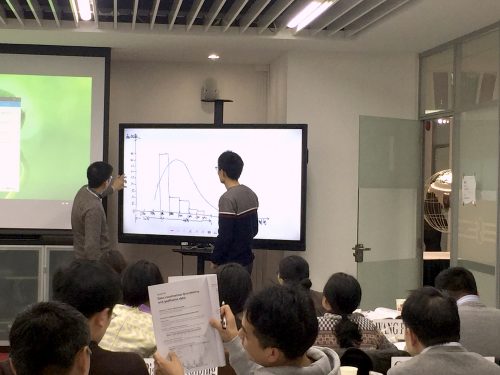By Adam Karpati, Senior Vice President, Public Health Programs
Actionable insights are the invisible thread that connect health data to lifesaving action. Collecting data is not enough, as our Bloomberg Philanthropies Data for Health Initiative’s Data Impact Program (DIP) found in our partnership with the Ministry of Health in Peru. For the first time, Peru was able to analyze and report on causes of death at the subnational level, revealing important progress in meeting health goals and also identifying health disparities across the country. After several years, we’re bringing together lessons like these from the 18 countries in which we work into a new website – www.D4Hdataimpact.org – that we’re proud to launch today.

The website serves as an information hub about DIP – what we do, why we do it and where we do it – as well as a repository for the tools and resources that we’ve generated in the first four years of program implementation.
The Data Impact Program’s goal is to help the government partners with whom we work to strengthen their use of data for policymaking and decision-making, and by so doing, improve their public health systems. Through this work in Africa, Asia, and Latin America, we’ve enhanced the technical expertise of staff in ministries of health and national statistical agencies, supported these public health institutions to enhance their data practices, including data provision to managers and leaders, external reporting and data dissemination, and promoted data-driven policy development.

Since our launch in 2016, we’ve built a global network of data analysts, training hundreds of ministry of health technical staff at the national and provincial levels in policy-relevant epidemiologic methods, cost-effectiveness and economic analysis, and other areas of analytics for public health practice, using both in-person and e-learning methods. These professionals are the foundation of organizational data use and investing in their skills provides benefits throughout their institutions.
Our work with government leaders – who often do not have technical backgrounds – has been critical to building the capacity to demand and use data in management and leadership and the need to build the “data cultures” of their institutions. For example, our work in Bangladesh, Brazil, Ghana, India, Malawi, Papua New Guinea and Sri Lanka has resulted in the development of core health indicators and approaches to integrate them into management and decision-making processes.
Our resources, such as Communicating with Data: A Guide to Writing Public Health Data Reports and our training of Ministry of Health Communication Staff, Conveying Health Information to Media and Colleagues, have been valuable tools in our work on helping improve the quality, accuracy and timeliness of data reports. Through this work, we’ve helped put in place systems and templates for reporting on health data in a number of countries. These reports have ranged in topic and function and included annual health reports, national mortality reports and burden of disease reports. These data products have played important roles in defining, communicating, and building support for government public health priorities.

Our Data to Policy program, which we developed and implement in collaboration with US CDC, works with analysts and policy developers to look deeply at the data related to pressing health topics and develop evidence-based recommendations to address them, has been implemented in 10 countries. This work resulted in the development of numerous policy briefs touching on the health issues most critical to the participating countries, ranging from infectious disease control to noncommunicable disease prevention to injury prevention. Many briefs have catalyzed new government regulatory or policy action and resource allocation.
While much of our work emphasizes the internal data functions of a ministry – collecting, analyzing, disseminating and using data – we are also focused on the cycle of accountability and the role that journalists can play in promoting the dissemination of accurate data by government. Our training for journalists, Effective Use of Data in Public Health Reporting, creates an in-country demand for accurate, accessible and transparent data. Implemented in several countries and regionally in Africa, Latin America and Asia, this initiative has built the skills and imparted practical knowledge on the centrality of data to hundreds of journalists, many of whom have gone on to write data-rich stories on important health issues.
The above is just a short overview of some of our main initiatives. Please visit the Data Impact website to learn more about our program at www.D4Hdataimpact.org